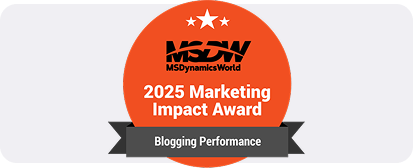Dynamics 365 Business Central HubSpot Integration: Step by Step | 2025
In Canada’s dynamic business sector, where agility, customer-centricity, and digital transformation are key, integrating Microsoft Dynamics 365 Business Central with HubSpot is more than just a technical upgrade rather it's a strategic leap. From Toronto’s bustling tech corridors to Vancouver’s thriving startups, Canadian businesses are increasingly seeking unified platforms that streamline operations and elevate customer engagement.
This article explores how the synergy between Business Central HubSpot Integration empowers Canadian enterprises to bridge the gap between finance and marketing, drive smarter decisions, and stay competitive in a market shaped by innovation and trust.
Table of Content
What is Microsoft Dynamics 365 Business Central
Business Central is an all-in-one cloud-based ERP solution designed for small to medium-sized businesses. It helps organizations manage their core business functions, including finance, sales, purchasing, inventory, and operations, all within a unified platform.
Business Central streamlines processes, improves financial visibility, and enhances decision-making by integrating data across departments.
With built-in intelligence, real-time reporting, and seamless integration with other Microsoft tools like Office 365 and Power BI, it empowers businesses to scale efficiently and adapt quickly to changing market demands.
As part of the Dynamics 365 Implementation, Business Central provides essential tools to manage everything from accounting to customer relationships in one place.
What is HubSpot?
HubSpot is a cloud-based CRM platform designed to help businesses attract, engage, and delight customers throughout their journey. It offers a suite of tools across marketing, sales, customer service, and content management, all integrated into a single, user-friendly interface.
With features like email marketing, lead tracking, automation, analytics, and a powerful CRM at its core, HubSpot enables businesses to build stronger relationships, streamline processes, and drive growth.
Its flexibility and scalability make it especially popular among small to mid-sized businesses looking to unify their customer-facing operations.
What is Business Central HubSpot Integration?
Business Central–HubSpot integration is a solution that connects Microsoft Dynamics 365 Business Central, an ERP system, with HubSpot, a customer relationship management (CRM) and marketing automation platform. This integration enables seamless data synchronization between sales, marketing, and finance teams by automating the flow of customer, product, and financial information.
It allows businesses to convert HubSpot deals into Business Central invoices or sales orders, view financial data directly within HubSpot, and use workflows to automate tasks like customer updates and billing.
Additionally, HubSpot Dynamics Integration streamlines the customer journey from lead acquisition to financial processing.
Ultimately, it helps eliminate manual data entry, improve accuracy, and enhance collaboration across departments.
Benefits of Business Central HubSpot Integration
Integrating Microsoft Dynamics 365 Business Central with HubSpot unlocks a powerful synergy between operational efficiency and customer engagement. Here are the key benefits of integrating Microsoft Dynamics 365 Business Central with HubSpot:
Top Benefits of Business Central–HubSpot Integration
Streamlined Sales-to-Finance Workflow
Automatically convert HubSpot deals into Business Central invoices or sales orders, reducing manual handoffs and delays.
Real-Time Data Synchronization
Keep customer, product, and financial data updated across both platforms, ensuring consistency and accuracy.
Improved Billing Accuracy
Eliminate duplicate data entry and reduce errors in invoicing and order processing.
Enhanced Customer Insights
Access Business Central financial data directly within HubSpot to make informed decisions during sales and support interactions.
Automated Workflows
Use HubSpot’s automation tools to trigger actions in Business Central, such as creating customers or updating records based on deal stages.
Better Collaboration Across Teams
Sales, marketing, and finance teams can work from a unified data source, improving communication and operational efficiency.
Faster Revenue Recognition
Accelerate the quote-to-cash cycle by linking CRM activities directly to ERP processes.
Scalable and Customizable
Supports custom workflows and templates to match unique business processes and growth needs.
Key features of Business Central HubSpot integration
The integration between Microsoft Dynamics 365 Business Central and HubSpot brings together two powerful platforms to create a unified ecosystem for managing customer relationships and business operations.
Here are the key features of the Business Central–HubSpot integration:
Two-Way Real-Time Data Sync
Automatically sync contacts, companies, deals, products, and invoices between HubSpot and Business Central.
Deal-to-Invoice Automation
Convert HubSpot deals into Business Central invoices or sales orders based on predefined rules or workflow triggers.
HubSpot Workflow Integration
Use HubSpot’s automation engine to trigger ERP actions like creating customers, updating records, or generating invoices.
Financial Data Visibility in HubSpot
View Business Central financial data (e.g., invoice status, payment history) directly within HubSpot for better decision-making.
Custom Field Mapping
Map custom fields between both platforms to ensure tailored data synchronization that fits your business needs.
Error Handling & Notifications
Get alerts for sync issues with one-click replay options to resolve errors quickly.
Historical Data Sync
Sync existing records from Business Central to HubSpot during setup, ensuring continuity and completeness.
Product Catalog Sync
Keep product data aligned across both systems for accurate quoting, invoicing, and reporting.
How to integrate Dynamics 365 Business Central with HubSpot?
Integrating Microsoft Dynamics 365 Business Central with HubSpot CRM can streamline your operations by syncing customer, sales, and financial data across both platforms. Here is a step-by-step process to integrate Dynamics 365 Business Central with HubSpot:
Native Integration via HubSpot App Marketplace: Step by Step
HubSpot offers a native integration for Microsoft Dynamics 365, which includes Business Central. Here's how to set it up:
Access the App Marketplace:
- In HubSpot, click the Marketplace icon in the top navigation bar.
- Search for Microsoft Dynamics 365 and select it.
Connect the App:
- Click Connect app.
- Enter your Business Central subdomain and install the app.
Configure Sync Settings:
Go to Settings > Integrations > Connected Apps.
- Select Microsoft Dynamics 365 and click Set up your sync.
- Choose the objects to sync (e.g., Contacts, Deals, Invoices, Orders).
- You can set up one-way or two-way sync depending on your needs.
Monitor & Manage Sync:
- You can turn off sync or connect multiple Business Central instances if needed.
Challenges of Business Central HubSpot integration and their resolution
Here are some common challenges faced during the integration of Microsoft Dynamics 365 Business Central with HubSpot, along with their resolutions:
- Limited Native Sync Capabilities
- Challenge: Native integrations may only support syncing basic objects like contacts, leaving out deals, invoices, or custom fields.
- Resolution: Use advanced integration platforms that support full object syncing and custom field mapping.
- Data Mapping Conflicts
- Challenge: Field mismatches or inconsistent naming conventions between HubSpot and Business Central can cause sync errors.
- Resolution: Customize field mappings and use transformation rules to align data formats and naming conventions across systems.
- One-Way Sync Limitations
- Challenge: Some setups only allow one-way sync, which limits real-time collaboration between sales and finance teams.
- Resolution: Implement two-way sync using API-based platforms to ensure updates reflect in both systems instantly.
- Sync Frequency and Performance
- Challenge: Delays in data syncing or performance bottlenecks during high-volume operations.
- Resolution: Optimize sync schedules, batch processing, and use platforms that support real-time or near-real-time syncing.
- Error Handling and Notifications
- Challenge: Lack of visibility into sync failures or missing alerts.
- Resolution: Choose integrations with built-in error logging, notifications, and one-click replay options to resolve issues quickly.
- Custom Object Support
- Challenge: Business Central may use custom tables or objects that aren't supported by default.
- Resolution: Use platforms that allow syncing of custom objects and tables through API access and flexible configuration.
What is HubSpot-Dynamics 365 Connector?
The HubSpot-Dynamics 365 Connector is an integration tool that allows seamless synchronization between HubSpot (a marketing, sales, and service platform) and Microsoft Dynamics 365 (a CRM and ERP solution). This connector ensures that data flows smoothly between the two platforms, enabling better collaboration between marketing and sales teams.
Key Features of the Connector
Two-Way Sync:
Syncs data in real-time or on a schedule between HubSpot and Dynamics 365.
Supports both one-way and two-way synchronization.
Supported Objects:
Common objects like Contacts, Companies (Accounts), Deals (Opportunities), Tasks, Emails, Calls, Invoices, and Sales Orders can be synced.
Custom Field Mapping:
With a paid Operations Hub subscription, users can create custom field mappings to tailor the integration to their business needs.
Automation Support:
You can trigger workflows in HubSpot based on Dynamics 365 data and vice versa.
Multiple Instances:
Supports connecting more than one Dynamics 365 instance to a single HubSpot account.
Security & Permissions:
Requires appropriate permissions in both systems (e.g., Read/Write access in Dynamics 365).
No External Services Needed:
Some versions of the connector (like the one by Novalogica) are self-contained, enhancing data security.
Benefits of HubSpot Dynamics 365 Connector
- Unified Customer View: Sales and marketing teams can access the same up-to-date customer data.
- Improved Efficiency: Reduces manual data entry and errors.
- Enhanced Reporting: Combines insights from both platforms for better decision-making.
- Streamlined Workflows: Automates tasks across platforms, saving time and effort.
How does Business Central and HubSpot integration improve team collaboration?
Integrating Microsoft Dynamics 365 Business Central with HubSpot can significantly enhance team collaboration across sales, marketing, finance, and customer service. Here's how:
Unified Data Access
Everyone works from the same real-time data such as sales, marketing, and finance teams all see consistent customer and transaction information.
Faster Deal-to-Invoice Process
Sales can close deals in HubSpot, and finance can instantly generate invoices in Business Central without manual handoffs.
Improved Lead Management
Marketing can track lead progress and hand off qualified leads to sales with full visibility into customer history and interactions.
Automated Workflows
Tasks like customer creation, invoice generation, and deal updates are automated, reducing back-and-forth communication.
Better Campaign Targeting
Marketing teams can use financial and sales data to create more personalized and effective campaigns.
Enhanced Customer Experience
Support and sales teams have access to complete customer profiles, enabling faster and more informed responses.
Reduced Errors and Miscommunication
Real-time sync minimizes the risk of outdated or conflicting information between departments.
Take the Next Step Toward Seamless Business Efficiency
Integrating Microsoft Dynamics 365 Business Central with HubSpot unlocks powerful possibilities, from real-time data synchronization and automated customer journeys to enhanced reporting and cross-team collaboration.
Dynamics Square is a Microsoft Dynamics partner, which holds an immaculate track record in terms of Dynamics 365 Implementation.
At Dynamics Square Canada, we specialize in helping businesses like yours connect the dots between ERP and CRM for smarter, faster, and more efficient operations.
Whether you're looking to streamline your sales pipeline, improve customer engagement, or gain better visibility across departments, our experts can tailor an integration solution that aligns perfectly with your business needs.
- Microsoft Gold-Certified Partner
- Deep expertise in Business Central and HubSpot ecosystems
- Local Canadian support with a global outlook
- End-to-end implementation, customization, and support
- Let’s build an integrated future for your business.
Schedule a free consultation with our Dynamics 365 specialists today and discover how we can help you leverage the full potential of your Business Central and HubSpot systems together.
In the event that you experience any difficulties, please do not hesitate to contact us by phone at the number +1 289 807 0740 or by sending an email to the address info@dynamicssquare.ca.
People Also Ask:
Does Business Central include CRM?
Yes, it has basic CRM features like contact and opportunity management.
What is the difference between Dynamics 365 and Business Central?
Dynamics 365 is a suite of apps; Business Central is one ERP app within it for SMBs.
What is the purpose of integrating Dynamics 365 Business Central with HubSpot?
The integration allows seamless data sharing between CRM Systems and ERP , improving collaboration across sales, marketing, and finance teams.
What data can be synced between Dynamics 365 Business Central and HubSpot?
Customer records, deals, invoices, products, quotes, and activities can be synced between both platforms.
How does Business Central HubSpot integration work?
It uses an API-based connector to sync data between Dynamics 365 Business Central and HubSpot, ensuring both platforms stay aligned.
Do I need third-party tools to integrate?
No, native connectors are available, but third-party tools can be used for more advanced features.
Can the integration be automated?
Yes, syncing can be automated based on your preferred schedule (hourly, daily, etc.).
What are the benefits of syncing invoices and quotes?
It helps align sales and finance teams, providing real-time insights into deal status and financial transactions.
Is the Business Central HubSpot integration secure?
Yes, both platforms use encryption, authentication, and access controls to ensure data security.
Will custom fields sync between the two platforms?
Yes, custom fields can be mapped to sync between both systems during the integration setup.
How are data conflicts or duplicates handled?
You can set rules for data precedence and use duplicate detection tools to prevent conflicts.
Can I view HubSpot data in Dynamics 365?
Yes, key HubSpot data like contacts and deals can be viewed directly in Dynamics 365 Business Central.
How does Business Central HubSpot integration affect reporting?
It enables more comprehensive reporting by combining CRM and financial data for deeper insights.
Can I integrate multiple HubSpot accounts?
Yes, multiple HubSpot accounts can be integrated, depending on the tools and setup.
How long does setup take?
Basic setups may take a few hours to a day, while more complex integrations can take 1 to 2 weeks.
What if there’s an issue with the integration?
You can resolve issues through platform support, integration logs, or field mapping adjustments.
Are there costs associated with the Business Central HubSpot integration?
Costs depend on the integration method; basic connectors may be free, but third-party tools could incur additional fees.



